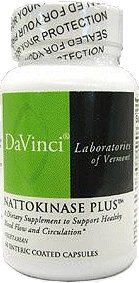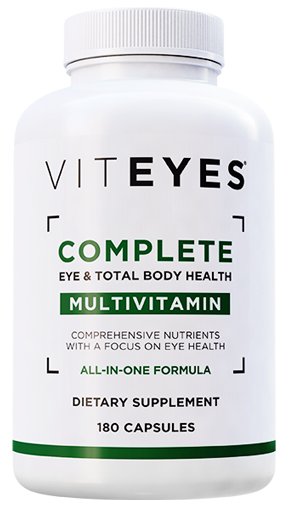Retinal Circulatory System
Choroid Damage to the choroid Vorticose veins Central retinal vein & artery
Capillaries contained within the choroid in the eye are responsible for the circulation of blood within the eye. If any of these tiny arteries or veins become blocked by blood clots or lipids (the same fats that eventually harden and form plaque in your main blood veins), then problems arise. The arterial capillaries deliver oxygen to the eye and the retina, and the venous capillaries take the de-oxygenated blood back to your lungs and heart where oxygen is again added. These capillaries also deliver nutrients to the eye and bring waste material back to the elimination system to be removed.
Vitamins
& Supplements
Not sure which to get?For help call us at 845.475.4158
Complete Product List
On a tight budget?
We recommend
Advanced Eye & Vision Support Formula (whole food) 60 vcaps
Discount Packages Vascular Support Package 1 Vascular Support Package 1Vascular Support for the Eye |
Essential Advanced Eye & Vision Support Formula (whole food) 60 vcaps Advanced Eye & Vision Support Formula (whole food) 60 vcapsWhole food, wild crafted herbal vegetarian formula with vision antioxidants, chemical- and preservative-free. |
Essential Carlsons Super Omega-3 Gems 1000 mg 250 softgels Carlsons Super Omega-3 Gems 1000 mg 250 softgelsHigh quality omega-3 fatty acids |
Essential Nattokinase Plus 60 caps Nattokinase Plus 60 capsFor heart health & high cholesterol |
Very Important Viteyes Complete - 180 caps Viteyes Complete - 180 capsMultivitamin & eye multivitamin |
| Important Microcurrent Stimulation 100ile Purchase Option Helpful Retinal Support (wild-crafted herbal formula) 2 oz |
Circulatory Structure of the Eye
Choroid
This rather amazing and multi-purpose structure lies between the sclera, which we perceive as the white of the eye, and the retina. Its primary function is that of supplying the outer layer of the retina with blood rich with oxygen and nutrients and removing de-oxygenated blood and waste from the eye. It also plays a role in maintaining the eye's lymphatic drainage. The blood vessels walls are made up of smooth muscles stimulated by fine neuron complexes that control the thickness of the vessels, and consequently, the choroid itself. The choroid also contains non-vascular muscle cells, especially right behind the macula that move the retina frontward and backward to remain within the plane of focus. Researchers have noted that the choroid thickens and thins depending on the kind of eyeglasses that are worn. Additionally it has been found that the choroid contains cells that secrete regulating enzymes, helps to maintain optimal retinal temperature, and plays a role in modulating intraocular pressure.1

The choroid is divided into five layers.
- The outer layer, the suprachoroidea is a transition area which contains components of both the choroid and the outer sclera, such as fibers of collagen, fibroblasts (connective tissue) and pigmented cells. The suprachoroidal space also contains lacunae, spaces that contain lymph that act as part of a lymphatic drainage system within the choroid. These lacunae also expand and contract, contributing significantly to the capacity of the choroid to rapidly thicken and thin in changing visual and environmental conditions.1,2,3
- The next layers, Haller's layer and Sattler's layer contain the large and medium sized arteries/veins, respectively. While there are prominent veins and arteries in the eye, these layers are the primary source of blood to the retina and during darkness, provide over 90% of the retinal supply of oxygen.
- A layer of capillaries, choriocapillaris contains the tiniest arteries and veins and forms a thin sheet highly interconnected. The layer is thickest at the fovea, the focal point of the retina.3
- Bruch's membrane lines the inside of the choroid. It is a filter between the retinal pigment layer and the tiny capillaries.3
Consequences of Choroidal Damage
Thinning of the choroid occurs as we age and patients with age-related macular degeneration are found to have thinner choroids.1,2
Choroidal blood flow is automatically regulated depending on the amount of oxygen present; if this function fails, new blood vessels form (neovascularization) distorting the position of photoreceptors and other critical retinal cells, as is exhibited in diabetic retinopathy and wet macular degeneration, which in turn can lead to bleeding in the eye and detached retina.1
Another result of AMD is the thickening of the Bruch's membrane lining the inside of the choroid which impairs its filtration capacity.1
For additional information on this fascinating part of the eye, read The Multifunctional Choroid.
Vorticose Veins
We have four or five vorticose, or vortex veins, which drain blood from the outer layer of the choroid, the suprachoroidea, and the cilary bodies at the front of the eye and deliver it to the retinal vein.
Central Retinal Vein & Artery
Outside the choroid, the central retinal vein passes through the same channel as the optic nerve. It is the sole mover of blood from the capillaries into larger veins to carry de-oxygenated blood back to the lungs and heart for re-oxygenation. If it becomes blocked or occluded severe swelling and damage occur.
The central retinal artery is the sole provider of blood to retina. Like the retinal vein, if blocked or occluded several damage to the retina can occur from lack of oxygen.
Footnotes
1. The Multifunctional Choroid, Debora Nickla & Josh Wallman, Progress in Retinal and Eye Research, March 2010, 144-168.
2. Choroid, Haller's, and Sattler's layer thickness in intermediate age-related macular degeneration with and without fellow neovascular eyes, Esmaeelpour M., et al,
Investigative Ophthalmology & Visual Science., July, 2014, 55(8) 5074-80.
3. Wikipedia.com
Choroid Damage to the choroid Vorticose veins Central retinal vein & artery
 info@naturaleyecare.com
info@naturaleyecare.com



 Home
Home



 Vision
Vision Vision
Vision



 Health
Health Health
Health Research/Services
Research/Services Pets
Pets About/Contact
About/Contact


